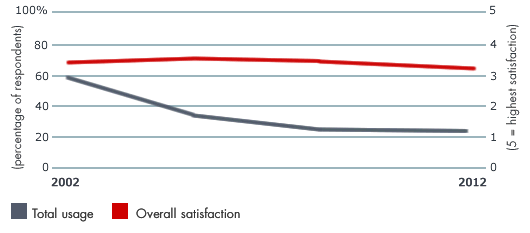Management Tools
In the face of slowing or declining sales, companies often downsize their employee base as a means of cutting costs to boost profitability. In 2007, nearly 1 million employees lost their jobs in a mass layoff (50-plus employees) in the United States (an average of 180 workers in approximately 5,300 separate events, according to the Bureau of Labor Statistics). The number of layoff events in the United States in September 2008 was the highest since September 2001. Although downsizing is effective for significant cost reduction, it often produces unintended side effects, such as damaged employee morale, poor public relations, future rightsizing hiring costs and an inability to quickly capitalize on opportunities when the economy improves. Skillful downsizing should help a company emerge from challenging economic conditions in stronger shape. Creative efforts to avoid downsizing include hiring freezes, salary cuts or freezes, shortened work weeks, restricted overtime hours, unpaid vacations and temporary plant closures. When downsizing proves unavoidable, the ultimate goal should be to eliminate nonessential company resources while minimizing the negative impact on the remaining organization.
Usage and effectiveness among survey respondents

How Downsizing works:
Downsizing can be effective if implemented appropriately. Companies must be careful to avoid sending the wrong messages to employees, shareholders and the media. Successful downsizing requires managers to:
Evaluate the overall impact of downsizing. The total cost of downsizing—including both financial and non-financial costs—must be taken into account. Managers must calculate the present value of all costs and benefits associated with the cuts, including severance packages, lower employee productivity due to disorder or talent loss, eventual rehiring expenses, future rightsizing costs and the lost opportunity costs associated with not having the appropriate manpower to accelerate out of the downturn. Investing in areas customers care about—while competitors are cutting back—helps position the company to take or sustain the lead once conditions improve. The value created from downsizing should exceed the cost of lower employee morale and potential damage to the company's reputation.
Develop a smooth downsizing process. It is crucial that managers invest aggressively in upfront planning for the job cuts. A company typically forms a committee to determine the appropriate level of downsizing and creates a process that takes into account the best interests of the company and the shareholders. Other important activities are training managers to conduct layoffs and assisting former employees in their job searches.
| Related topics | Bain capabilities |
Companies use Downsizing to:
- Reduce costs
- Rightsize resources relative to market demand
- Signal that the company is taking proactive steps to adjust to changing business needs
- Take advantage of cost synergies after a merger
- Release the least-productive resources
Previous: Decision Rights Tools | Home | Next: Employee Engagement Surveys
Selected references
Carter, Tony. The Aftermath of Reengineering: Downsizing and Corporate Performance. Haworth Press, 1999.
Cooper, Cary L. and Ronald J. Burke. The Organization in Crisis: Downsizing, Restructuring, and Privatization. Blackwell, 2000.
De Meuse, Kenneth P., and Mitchell Lee Marks. Resizing the Organization: Managing Layoffs, Divestitures, and Closings. Pfeiffer, 2003.
Gertz, Dwight L., and Joao Baptista. Grow to Be Great: Breaking the Downsizing Cycle. Free Press, 1995.
Marks, Mitchell. Charging Back Up the Hill: Workplace Recovery After Mergers, Acquisitions, and Downsizings. John Wiley & Sons, 2002.
Mishra, Karen E., Gretchen M. Spreitzer, and Aneil K. Mishra. "Preserving employees morale during downsizing." Sloan Management Review, Winter 1998, pp. 83-95.
Trevor, Charlie O., and Anthony J. Nyberg. "Keeping Your Headcount When All About You Are Losing Theirs." Academy of Management Journal, 2008, Vol. 51, No. 2, pp. 259-276.
Management Tools 2013